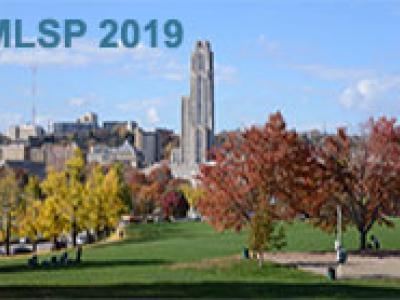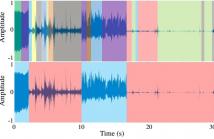
- Read more about AUTOMATIC SCREENING OF CHILDREN WITH SPEECH SOUND DISORDERS USING PARALINGUISTIC FEATURES
- Log in to post comments
MLSP (3).pdf
- Categories:
 29 Views
29 Views
- Read more about QUALITY CONTROL OF VOICE RECORDINGS IN REMOTE PARKINSON'S DISEASE MONITORING USING THE INFINITE HIDDEN MARKOV MODEL
- Log in to post comments
The performance of voice-based systems for remote monitoring of Parkinson’s disease is highly dependent on the degree of adherence of the recordings to the test protocols, which probe for specific symptoms. Identifying segments of the signal that adhere to the protocol assumptions is typically performed manually by experts. This process is costly, time consuming, and often infeasible for large-scale data sets. In this paper, we propose a method to automatically identify the segments of signals that violate the test protocol with a high accuracy.
- Categories:
 28 Views
28 Views
- Read more about Towards disease-specific speech markers for differential diagnosis in Parkinsonism
- Log in to post comments
Parkinsonism refers to Parkinson’s Disease (PD) and Atypical Parkinsonian Syndromes (APS), such as Progressive
Supranuclear Palsy (PSP) and Multiple System Atrophy (MSA). Discrimination between PD and APS and within
APS groups in early disease stages is a very challenging task. Interestingly, speech disorder is frequently an early and
prominent clinical feature of both PD and APS. This renders speech/voice analysis a promising tool for the development of
ICASSP_BD.pdf
- Categories:
 10 Views
10 Views
- Read more about Segmentation, Classification, and Visualization of Orca Calls using Deep Learning
- Log in to post comments
Audiovisual media are increasingly used to study the communication and behavior of animal groups, e.g. by placing microphones in the animals habitat resulting in huge datasets with only a small amount of animal interactions. The Orcalab has recorded orca whales since 1973 using stationary underwater hydrophones and made it publicly available on the Orchive. There exist over 15 000 manually extracted orca/noise annotations and about 20 000 h unseen audio data. To analyze the behavior and communication of killer whales we need to interpret the different call types.
- Categories:
 150 Views
150 Views
- Read more about Deep Learning Features for Robust Detection of Acoustic Events in Sleep-Disordered Breathing
- Log in to post comments
Sleep-disordered breathing (SDB) is a serious and prevalent condition, and acoustic analysis via consumer devices (e.g. smartphones) offers a low-cost solution to screening for it. We present a novel approach for the acoustic identification of SDB sounds, such as snoring, using bottleneck features learned from a corpus of whole-night sound recordings. Two types of bottleneck features are described, obtained by applying a deep autoencoder to the output of an auditory model or a short-term autocorrelation analysis.
icassp2019-poster.pdf
- Categories:
 15 Views
15 Views
- Read more about A CASCADE OF CNN AND LSTM NETWORK WITH 3D ANCHORS FOR MITOTIC CELL DETECTION IN 4D MICROSCOPIC IMAGE
- Log in to post comments
Mitotic event detection is a fundamental step in investigating of cell behaviors. The event can be used to analyze various diseases, but most mitotic event detections performed previously focused only on two-dimensional (2D) images with time information. Owing to the complex background (normal cells) and mitotic event orientations, the 2D detection methods yield many false positive and false negative results. To solve this problem, we proposed a 2.5 dimensional (2.5D) cascaded end-to-end network combined with 3D anchors for accurate detection of mitotic events in 4D microscopic images.
ICASSP2019.pdf
- Categories:
 7 Views
7 Views
- Read more about A SUPERVISED APPROACH TO GLOBAL SIGNAL-TO-NOISE RATIO ESTIMATION FOR WHISPERED AND PATHOLOGICAL VOICES
- Log in to post comments
- Categories:
 8 Views
8 Views
- Read more about A PARAMETRIC APPROACH FOR CLASSIFICATION OF DISTORTIONS IN PATHOLOGICAL VOICES
- Log in to post comments
- Categories:
 14 Views
14 Views
- Read more about BirdVox-full-night: a dataset and website for avian flight call detection.
- Log in to post comments
This article addresses the automatic detection of vocal, nocturnally migrating birds from a network of acoustic sensors.
Thus far, owing to the lack of annotated continuous recordings, existing methods had been benchmarked in a binary classification setting (presence vs. absence).
Instead, with the aim of comparing them in event detection, we release BirdVox-full-night, a dataset of 62 hours of audio comprising 35402 flight calls of nocturnally migrating birds, as recorded from 6 sensors.
- Categories:
 307 Views
307 Views